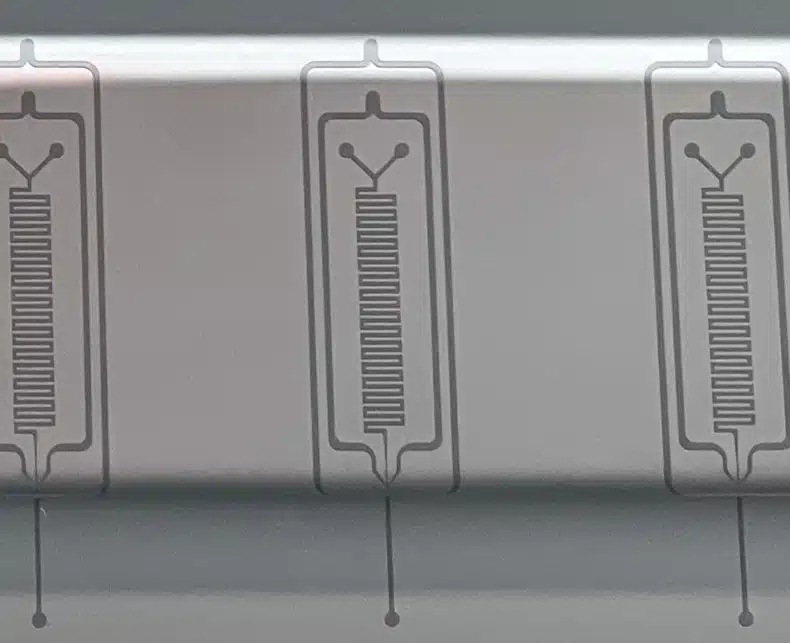Microfluidic devices are increasingly popular due to their precise manipulation of small amounts of fluids through narrow channels. This is advantageous in various applications and scientific fields, such as chemistry, biology, and medicine.
Most microfluidic devices depend on standard photolithography as a microfabrication method to process photoresists for the electronics industry and to pattern substrates. However, soft lithography complements photolithography as it enables processing of different materials, such as polymers and gels.
Soft lithography is not an independent method of microfluidic device fabrication. Instead, it must be used with another lithography technique, frequently e-beam or photolithography, to produce the necessary mold or stamp.1
This article discussed the main steps in fabricating SU-8 molds for soft lithography, which is utilized to create microfluidic devices.

Image Credit: Platypus Technologies, LLC
SU-8 Mold Fabrication
This article considers the process for creating SU-8 epoxy resin molds with a silicon wafer. However, alternative methods and materials are available, depending on suitability or preferences.
Wafer preparation
Wafer preparation is required before the addition of a SU-8 photoresist. This preparation includes cleaning the wafer with acetone and heating the wafer to remove all surface moisture. The SU-8 resin connection with the substrate should be improved.
Spin coating
The creation of a photoresist layer is required for mold creation. The most widely used method is spin coating, which yields the required uniform layer on top of a substrate.
A pool of SU-8 photoresist is positioned in the middle of the substrate on a rotating platform. The platform's rotation speed and acceleration establish the photoresist layer's thickness.
Soft baking the photoresist
Once the photoresist layer has undergone the spin-coating process, the soft baking process is employed for the evaporation of the solvent and hardening of the SU-8 photoresist. This is the first of three baking processes involved in mold development.
Photomask Alignment and UV Exposure
A photomask is aligned with the substrate to ensure the desired pattern can be generated on the surface. SU-8 is a negative photoresist, meaning that it will become hard following exposure to UV light, with the part not exposed dissolving.
Post-exposure baking
The second baking process occurs following the exposure of the substrate to UV light. The photoactive components are activated during UV exposure, but energy is required for the reaction to progress further. In post-exposure baking, this required energy is generated and aids the development of the substrate’s mechanical properties.
Development
The wafer is submerged in a solvent to reveal the design patterned on the substrate and dissolve the photoresist parts not subjected to UV light.
Hard baking
Hard baking is the third process in fabricating a SU-8 mold. It is carried out to enhance the mechanical properties of the substrate and decrease the likelihood of the material cracking. This stage is optional.
Checking
Ultimately, the completed SU-8 mold must be checked to verify it is suitable for its intended application and satisfies any regulatory requirements. This is typically performed using a microscope, but additional observation may occur using an optical or a mechanical profiler.
Platypus Technologies
Platypus Technologies provides various photolithography services and supplies negative and positive photoresists (including SU-8 wafers) for various applications across the electronics industry.
Contact a member of Platypus Technologies today to learn more about SU-8 photolithography or the fabrication of SU-8 epoxy molds.
References and Further Reading
- https://www.sciencedirect.com/topics/materials-science/soft-lithography
- https://www.researchgate.net/publication/350182349_Fabrication_Methods_for_Microfluidic_Devices_An_Overview

This information has been sourced, reviewed and adapted from materials provided by Platypus Technologies, LLC.
For more information on this source, please visit Platypus Technologies, LLC.